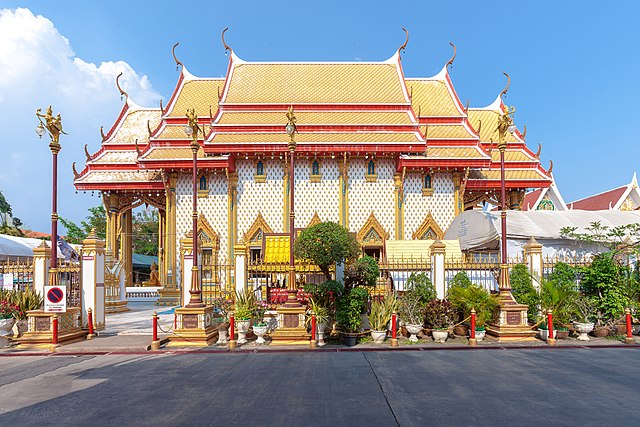Thai temple art and architecture
Thai temple art and architecture is the art and architecture of Buddhist temples in Thailand. Temples are known as wats, from the Pāḷi vāṭa, meaning "enclosure". A temple has an enclosing wall that divides it from the secular world. Temples served as a stabilizing center in these communities because their sacred teachings became a basis of authority and boundaries, their precincts became places of instruction, their regimes of common ownership of property formed them into economic centers, and their functions allowed them to serve at the heart of these communities in a variety of ways.
Interior of Ubosot of Wat Hong Rattanaram, Bangkok
Ubosot, Ho Trai and Chedi (from left to right) of Wat Chiang Man, built in Lanna architecture
Ubosot of Wat Nimmanoradi, Bangkok
Ubosot with multiple front roof located at Wat Phra Kaew, Bangkok
Wat Pho, also spelled Wat Po, is a Buddhist temple complex in the Phra Nakhon District, Bangkok, Thailand. It is on Rattanakosin Island, directly south of the Grand Palace. Known also as the Temple of the Reclining Buddha, its official name is Wat Phra Chetuphon Wimon Mangkhalaram Rajwaramahawihan. The more commonly known name, Wat Pho, is a contraction of its older name, Wat Photaram.
The Reclining Buddha
Phra Maha Chedi Si Ratchakan
Arrival of King Mongkut at Wat Pho, 13 October 1865
Phra Mondop of Wat Pho. Flanking its entrances are statues of Yak Wat Pho








